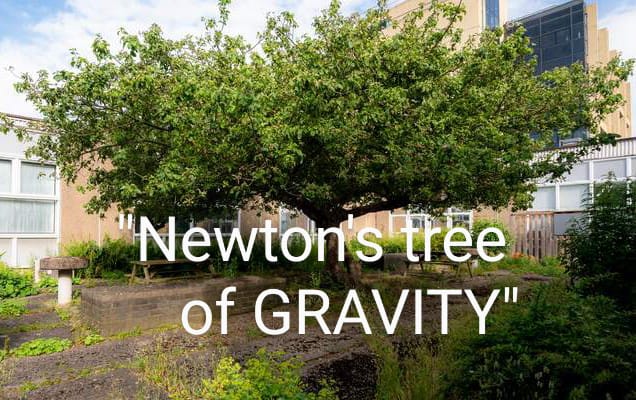Isaac Newton’s discovers ‘universal gravitation’, seeing a falling apple
You all have read about this tree in your childhood in Physics books. This is the tree that gave Newton a great knowledge of Physics and that was “Theory of Gravitation”. Newton told his friend French philosopher Voltaire about taking inspiration from the falling apple.
Apart from others, Newton also told this to his assistant John Conduit who mentioned this in a letter in 1726. It was written in this letter – The idea of gravity came to Newton when he saw an apple falling from a tree. The incident of apple falling from the tree happened in 1666. Newton’s friend William Stukel first wrote about this incident in his biography published in 1752.
Edmund Turner wrote in his 1806 book, ‘A History of the Town and Soke of Grantham’ that: ……the apple tree is still there which people come to see. The tree was sketched by Edmund Turner’s brother Charles Turner in 1820, which indicates that it is near Woolsthorpe Manor House in Lincolnshire, where Newton was born. The tree was cared for by the Woolerton family who lived in the manor house from 1733 to 1947. The place is now owned by the National Trust of England.
Growing in a courtyard within the school is an ancient apple tree, a relic of Isaac Newton’s past. The growing apple tree began as a grafted cutting taken from the garden of Woolsthorpe Manor, Newton’s Lincolnshire home. In the late summer of 1666, it was the same tree that helped Isaac Newton question the nature of gravity.
“Our tree” began in Newton’s garden at Woolsthorpe Manor around 1820, where it was grown by the Rev. Charles Turner. From Newton’s garden cuttings of our tree travelled to: Belton Park in the 1930s, then a fruit research centre at East Malling in Kent, the Cambridge Botanical Gardens and finally Kew Gardens, who gifted us the tree in 1976.
The apples growing on our tree are an extremely rare variety called the ‘Flower of Kent’, first mentioned in the 15th century.
Newton described the discovery to many of his acquaintances including: Voltaire (French philosopher and essayist), John Conduit (his assistant at the Royal Mint), Katherine Barton (his niece), William Stevekelly (friend and archaeologist) and Christopher Dawson (student at Cambridge).
The first written account is found in Notes on Newton’s Life compiled by John Conduitt, dated 1726, the year of Newton’s death. It states that: “He first had the idea of his system of gravitation, which came to him by observing an apple fall from a tree”.
Edmund Turner’s brother, the Rev. Charles Turner, drew the tree in 1820, showing its position in relation to the manor house.
Although Newton did not specify which tree he saw the apple fall from, there was only one tree growing in Newton’s garden. It was first seen by Sir David Brewster when he visited the house in 1830, and is mentioned in a description given by George Forbes (Professor of Physics at the University of Glasgow).
Several generations of the Woolerton family cared for the tree; they were tenant farmers and lived in the house from 1733 to 1947. Sadly, despite their best efforts in 1816, the tree fell in a storm. Some branches were removed but a large portion of the tree survived and re-rooted. Amazingly, the tree is still growing at Woolsthorpe Manor today and is now over 350 years old.
Our tree at the University of York is still rooted in the present day, but it serves as a reminder that questioning conventionality can lead to extraordinary discoveries. Our apple tree is a piece of history, but Isaac Newton’s thinking still resonates today.
Article written by and Editorial credit: State Bureau Chief Himanshu Nauriyal.
